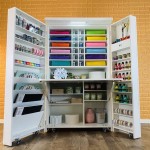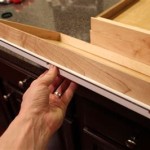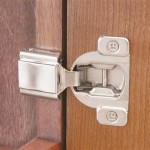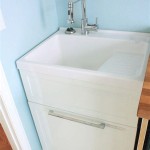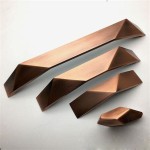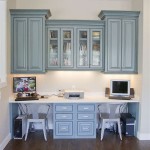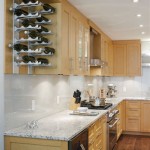The Best Paint Finish for Kitchen Cabinets
Selecting the appropriate paint finish for kitchen cabinets is a critical decision that significantly impacts both the aesthetic appeal and the long-term durability of the cabinetry. Kitchen cabinets are subjected to frequent use, exposure to moisture and grease, and require regular cleaning. Consequently, the chosen paint finish must be able to withstand these challenges while maintaining its visual appeal. The optimal finish balances aesthetic preferences with practical considerations, ensuring a long-lasting and visually pleasing result. Various factors contribute to determining the "best" paint finish, including the desired sheen level, the type of paint used, and the preparation of the cabinet surfaces.
Paint finishes are generally categorized by their sheen level, which refers to the amount of light reflected off the surface. This characteristic influences both the appearance and the performance of the paint. Sheen levels range from flat or matte, which reflects little light, to high gloss, which reflects a significant amount of light. Each sheen level possesses distinct advantages and disadvantages that must be carefully considered in the context of kitchen cabinets.
Understanding Different Paint Sheen Levels
Understanding the characteristics of various paint sheen levels is paramount when selecting a finish for kitchen cabinets. Each sheen level offers a unique combination of aesthetic qualities and practical attributes that contribute to the overall performance and appearance of the painted cabinets.
Matte/Flat Finish: Matte or flat finishes possess the lowest sheen level, absorbing most of the light that strikes the surface. This results in a non-reflective, velvety appearance that is effective at concealing imperfections on the substrate. Scratches and smudges are highly visible on matte/flat surfaces. This makes them unsuitable for high-traffic areas that require frequent cleaning. Therefore, matte or flat finishes are generally not recommended for kitchen cabinets.
Eggshell Finish: Eggshell finishes offer a slightly higher sheen level than matte, resembling the subtle sheen of an eggshell. This finish provides a more washable surface than matte, making it a marginally better choice for kitchen environments. However, eggshell finishes are still relatively susceptible to staining and are not as durable as higher sheen options. While better than matte, eggshell is often not the top choice for kitchen cabinets.
Satin Finish: Satin finishes strike a balance between aesthetics and durability, offering a smooth, velvety sheen that is more reflective than eggshell. This finish is relatively easy to clean and resistant to staining, making it a popular choice for kitchen cabinets. Satin finishes also conceal imperfections reasonably well, offering a good compromise between appearance and practicality. Many homeowners and painting professionals find satin to be a suitable option for kitchen cabinets.
Semi-Gloss Finish: Semi-gloss finishes offer a noticeable sheen that is more reflective than satin. This finish is highly durable and resistant to moisture and stains, making it an excellent choice for kitchen cabinets that are subjected to frequent use and cleaning. The higher sheen level also makes semi-gloss finishes easier to clean than lower sheen options. However, semi-gloss finishes tend to highlight imperfections on the surface, requiring meticulous preparation and application. The reflective nature of semi-gloss can also be perceived as too shiny by some homeowners.
High-Gloss Finish: High-gloss finishes possess the highest sheen level, reflecting a significant amount of light and creating a lustrous, mirror-like appearance. This finish is extremely durable, stain-resistant, and easy to clean, making it a practical choice for kitchen cabinets. However, high-gloss finishes accentuate any imperfections on the surface, requiring extensive preparation and a flawless application. The highly reflective nature of high-gloss can also be overwhelming in some kitchen designs. While durable, the required level of surface preparation often makes this finish cost-prohibitive or impractical for many homeowners.
The selection of a paint sheen level should be carefully considered based on the specific needs and preferences of the homeowner, taking into account factors such as the desired aesthetic, the level of traffic in the kitchen, and the condition of the cabinet surfaces. Careful selection of the correct sheen can greatly improve the look and longevity of the kitchen cabinets.
The Importance of Paint Type for Kitchen Cabinets
The type of paint used on kitchen cabinets is just as crucial as the sheen level. Different paint formulations offer varying levels of durability, adhesion, and resistance to moisture and grease. Using the wrong type of paint can result in premature peeling, chipping, or staining, leading to costly repairs or a complete repaint.
Oil-Based Paints: Oil-based paints traditionally offered excellent durability and a smooth, even finish. They are known for their superior adhesion and resistance to chipping and scratching. However, oil-based paints have several significant drawbacks, including a strong odor, long drying times, and the requirement for harsh solvents for cleanup. Furthermore, oil-based paints tend to yellow over time, especially in areas exposed to sunlight. Due to these drawbacks, oil-based paints are becoming less common for use on kitchen cabinets, especially with the advent of high-quality water-based alternatives.
Latex (Water-Based) Paints: Latex or water-based paints have become increasingly popular for kitchen cabinets due to their ease of use, low odor, and quick drying times. Modern latex paints offer excellent durability and resistance to moisture and stains, rivaling the performance of traditional oil-based paints. They are also easier to clean up, requiring only soap and water. For kitchen cabinets, selecting a high-quality acrylic latex paint is essential to ensure optimal adhesion and durability. Acrylic latex paints form a flexible film that resists cracking and peeling, making them a suitable choice for cabinets that are subject to temperature and humidity fluctuations.
Acrylic Enamel Paints: Acrylic enamel paints represent a specialized category of water-based paints that are specifically formulated for use on cabinets and trim. These paints offer exceptional hardness and durability, providing a finish that is highly resistant to scratches, scuffs, and stains. Acrylic enamel paints also possess excellent leveling properties, resulting in a smooth, professional-looking finish. While they may be slightly more expensive than standard latex paints, the enhanced durability and performance of acrylic enamel paints make them a worthwhile investment for kitchen cabinets.
Alkyd Paints (Oil-Based Alternatives): Alkyd paints are a type of modified oil-based paint that offers some of the benefits of both oil-based and water-based paints. Alkyd paints provide excellent durability and a smooth, even finish, similar to traditional oil-based paints. However, they typically dry faster and have less odor than traditional oil-based paints. Alkyd paints can be a suitable alternative to traditional oil-based paints for homeowners who desire the durability and finish of oil-based paints but prefer a product with lower VOC emissions and faster drying times. These may require special primers for proper adhesion to existing cabinet finishes.
Ultimately, the choice of paint type depends on the specific needs and preferences of the homeowner. However, in most cases, a high-quality acrylic latex or acrylic enamel paint is the preferred option for kitchen cabinets due to its combination of durability, ease of use, and environmental friendliness. Consulting with a professional painter can provide valuable insights and guidance in selecting the most appropriate paint type for a particular project.
Proper Preparation is Paramount For a Lasting Paint Finish
Regardless of the paint finish or type selected, proper preparation of the cabinet surfaces is essential for achieving a durable and long-lasting result. Inadequate preparation is a common cause of paint failure, leading to peeling, chipping, and an overall unsatisfactory finish. Proper preparation involves cleaning, sanding, and priming the cabinets to create a smooth, clean, and receptive surface for the paint.
Cleaning: The first step in preparing kitchen cabinets for painting is thorough cleaning. Cabinets are often coated with grease, grime, and food residue, which can interfere with paint adhesion. Use a degreasing cleaner specifically designed for kitchen surfaces to remove all traces of contaminants. Rinse the cabinets thoroughly with clean water and allow them to dry completely before proceeding to the next step. Trisodium phosphate (TSP) was commonly used, but has been replaced by phosphate free cleaners as it is considered environmentally unsound. Make sure the cleaner chosen is safe for the cabinet material, and follows all safety warnings on the packaging.
Sanding: Sanding the cabinet surfaces is crucial for creating a smooth, even surface and for providing "tooth" for the paint to adhere to. Use a medium-grit sandpaper (120-180 grit) to lightly sand the cabinets, focusing on areas with imperfections or existing finishes. Avoid sanding too aggressively, as this can damage the cabinet surfaces. After sanding, remove all dust particles with a tack cloth or vacuum. For particularly glossy surfaces, a coarser grit may be required initially to dull the existing finish.
Priming: Priming is an essential step that helps to seal the cabinet surfaces, improve paint adhesion, and block stains from bleeding through. Use a high-quality primer specifically designed for cabinets and trim. Apply the primer in thin, even coats, following the manufacturer's instructions. Allow the primer to dry completely before applying the paint. For oil-based paints, an oil-based primer is generally recommended. For latex paints, a latex-based primer is typically the best choice. Some primers are designed to bond to glossy surfaces, making sanding less critical, but these should be used cautiously and in accordance with the manufacturer's instructions.
Repairing Imperfections: Before painting, it is important to address any imperfections in the cabinet surfaces, such as dents, scratches, or cracks. Use wood filler or putty to fill in these imperfections, allowing the filler to dry completely before sanding smooth. Ensure the filler is compatible with the chosen paint type and primer.
Caulking: Caulking is often necessary to seal gaps and seams around the cabinet frames and panels. Use a paintable caulk to fill in these gaps, creating a seamless and professional-looking finish. Smooth the caulk with a wet finger or a caulking tool before it dries.
By investing the time and effort in proper preparation, homeowners can ensure that their painted kitchen cabinets will not only look beautiful but also withstand the rigors of daily use for years to come. Skipping or skimping on preparation is a common mistake that can lead to disappointing results and the need for premature repainting.
8 Best Cabinet Finishes Paints Stains Glazes And More Vevano

How To Paint Kitchen Cabinets In 7 Simple Steps

Best Paint For Your Next Cabinet Project The Home Depot
:max_bytes(150000):strip_icc()/best-paint-sheen-for-kitchen-1822123-hero-4a38a2049b404591b4612da86dab955a.jpg?strip=all)
Best Paint Finish For Kitchen Walls And Cabinets

The Best Paint Finish For Every Room

Best Paint For Cabinets Oil Enamel Or Hybrid

Best Paint For Kitchen Cabinets Solved Bob Vila

Satin Vs Semi Gloss And Paint Differences

The Best Paint For Kitchen Cabinets

8 Tips For A Professional Looking Finish On Your Cabinets Cabinetdoors Com
Related Posts

